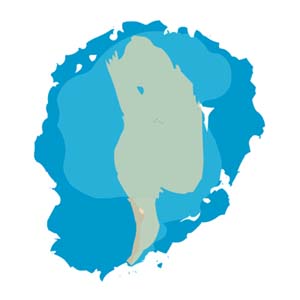
DISCLAIMER:
This is not a transcript of an actual conversation. This dialogue is one of a series composed from conversations I have had with people through the course of this research. It represents my reading of what was said, and also reflects questions I pose to myself, playing the devil’s advocate. Writing these dialogues has helped me think through some issues raised by skeptics of my work. This has been helpful to the progress of the project, and to those involved I am most grateful.
See also (in Comments): McLuhan, Poe, Monkey body image research
.
Me:
What is the difference between love and bliss?
She:
One has four letters, the other has five.
Me:
No, I mean are they they same feeling?
She:
How would we know?
What you feel and what I feel
are different because we are different.
It’s impossible to translate feelings
into words.
Me:
But still we try.
How does connectivity feel?
Or can we simply say it’s a fact
that every thing’s connected?
Then there would be no poetry.
.
.
Camille Flammarion, the astronomer…belonged to that secret guild, the collectors of coincidences. Some addicts keep personal logs enriched by newspaper cuttings to prove their point that coincidences ‘have a meaning’; others regard collecting as a vice in which they indulge with guilty knowledge of sinning against the laws of rationality. Kammerer was a collector belonging to the first category; so was C.G. Jung. ‘I have often come up against the phenomena in question’, he wrote, ‘and could convince myself how much these inner experiences meant to my patient. In most cases they were things people do not talk about for fear of exposing themselves to thoughtless ridicule. I was amazed to see how many people have had experiences of this kind and how carefully the secret was guarded.’
The title that Kammerer chose for his book, Dea Gesetz der Serie, is in German almost a cliché – the equivalent of ‘it never rains but it pours’. He defines his key concept as follows: ‘A Series manifests itself as a lawful recurrence of the same or similar things and events – a recurrence, or clustering, in time or space whereby the individual members in the sequence – as far as can be assertained by carefull analysis – are not connected by the same active cause…
…this first attempt at a systematic classification of a-causal serial events may perhaps at some future date find unexpected applications.
Reference: Appendix #1 from the book: ‘The Case of the Midwife Toad’
of the late Arthur Koestler – 1971 (Vintage books): The Law of Seriality, Rick wellens, Editor
Jung dubbed Kammerer’s concept ‘synchronicity’.
Network science has evolved.
